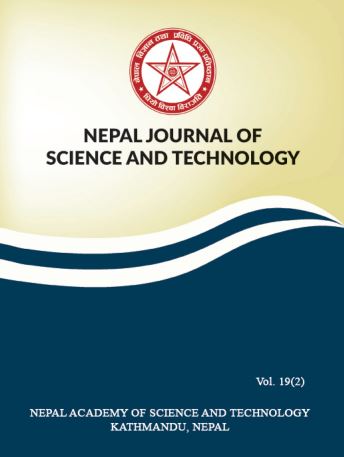Fuel Briquettes from Sal (Shorea robusta) Forest Litter as an Alternative Cooking Fuel
DOI:
https://doi.org/10.3126/njst.v20i1.39433Keywords:
Biobriquettes, pellets, calorific value, sal leavesAbstract
Sal (Shorea robusta) forest leaf litter strongly influences seed germination and seedling survivorship. Therefore, it is crucial to open up the litter layer in such a forest with abundant leaf litter. Briquetting of Sal forest leaf litter can be an option for its management and meet the increasing energy demand. This research work is performed to quantify the amount of Sal forest litter and study the briquette’s combustion properties. The study was carried out in the Namuna Community Forest of Jhapa district. The average weight of leaf litter in the field was observed to be 851 g/m2 . Five varieties of briquettes were produced using different briquetting technologies. Proximate analysis results, calorific value and water boiling tests show these briquettes have good fuel characteristics and can be used as alternative cooking fuel.
Downloads
Downloads
Published
How to Cite
Issue
Section
License
Copyright (c) 2021 Sushmita Dulal, Ramesh Man Singh

This work is licensed under a Creative Commons Attribution-NonCommercial 4.0 International License.
Authors retain copyright and grant the journal right of first publication.




